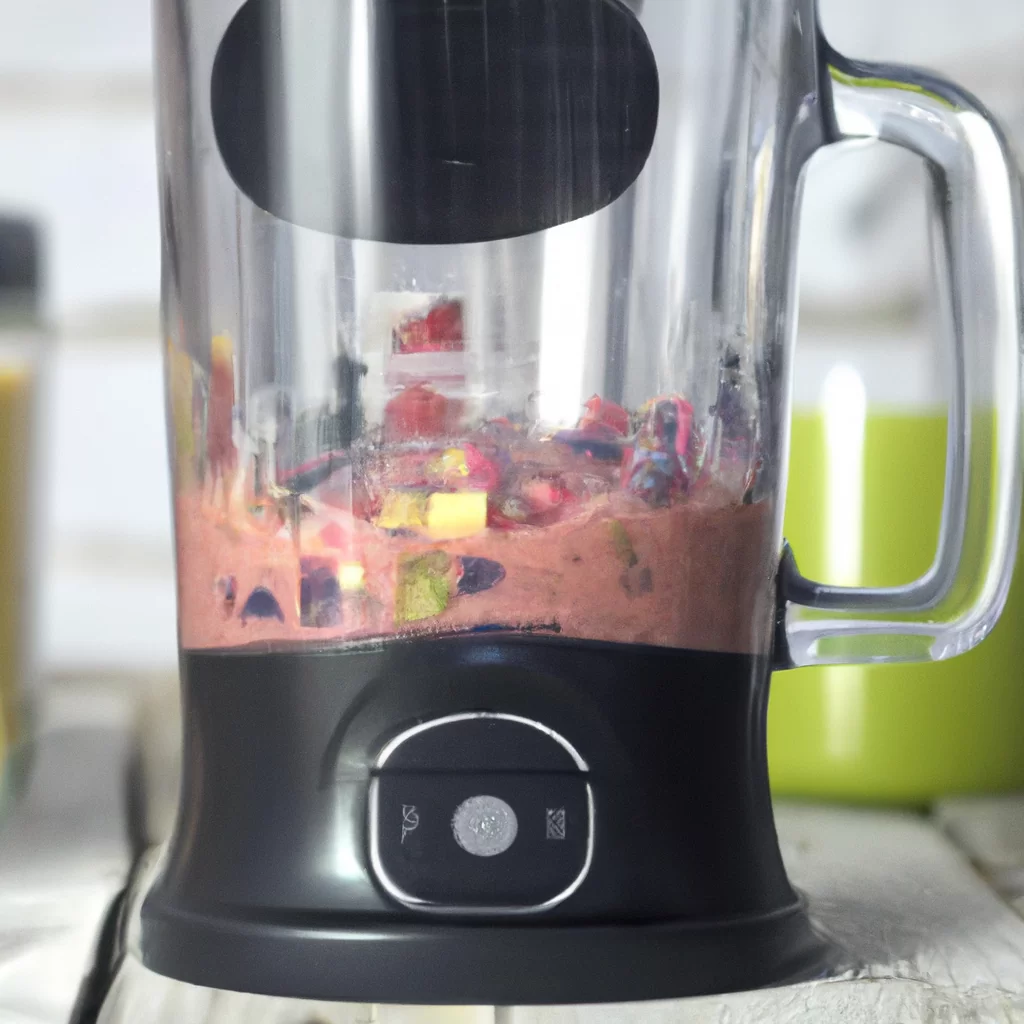How does a blender blend food?


How does a blender blend food?
Blenders are essential kitchen appliances that have become a staple in modern households. They are used to make smoothies, soups, sauces, and other mixed beverages. But, have you ever wondered how a blender blends food? Blending technology has advanced significantly over the years, and the blender mechanism has undergone several changes to perfect the blending process. In this article, we will delve into how a blender blends food, the blender mechanism, and the blending technology behind it.
The Blender Mechanism
Before we dive into how a blender blends food, let’s first understand the blender mechanism. A blender comprises a motor, a blade assembly, a jar, and a lid. The motor is the driving force behind the blender, and it powers the blade assembly to chop, puree, or blend food items.
The blade assembly comprises several blades arranged in a circular pattern at the bottom of the blender jar. The blades are designed to create a vortex that pulls food downwards towards the blades. The vortex pulls food items downwards, ensuring that they come into contact with the blades, which chops or blends them into a smooth mixture.
The Blender Process
Now that we have established the blender mechanism let’s delve into the blender process. When you turn on your blender, the motor rotates the blades, creating a vortex. The vortex pulls the food items downwards towards the blades, where they are chopped, pureed, or blended into a smooth mixture.
The vortex created by the blades allows a continuous supply of food items to come into contact with the blades, ensuring that the food items are blended or chopped evenly. The speed of the blender motor determines the speed of the vortex. A higher motor speed creates a faster vortex, which results in a smoother blend.
Blending Technology
Blending technology has come a long way, and modern blenders have several features that make blending even easier. For instance, some blenders have pre-programmed settings that allow you to choose the type of blend you want. These settings vary from smoothies to ice-crushing to pulse settings.
Blenders also come with different types of blades that are designed to blend different types of food items. For instance, some blenders come with ice-crushing blades that are designed to crush ice into small particles. Other blenders come with multi-purpose blades that can chop, puree, or blend food items.
Blenders also come with different jar sizes, depending on your blending needs. For instance, if you are blending large quantities of food items, you may need a blender with a larger jar. If you are blending small quantities, you may need a blender with a smaller jar.
Conclusion
In conclusion, blenders are essential kitchen appliances that have become a staple in modern households. The blender mechanism comprises a motor, blade assembly, jar, and lid, and it is the driving force behind the blender. When you turn on your blender, the motor rotates the blades, creating a vortex that pulls food items downwards towards the blades, where they are chopped, pureed, or blended into a smooth mixture.
Blending technology has significantly advanced over the years, and modern blenders have several features that make blending even easier. Pre-programmed settings, different blade types, and jar sizes are just a few of the features that make blending easier. So the next time you use your blender, you now know how it works!
Recent Posts
How do I create an engaging and informative online quiz or assessment?
Creating an engaging and informative online quiz or assessment can be a powerful tool for… Read More
What are the most effective methods for managing and reducing work-related stress in the hospitality industry?
Work-related stress is a common issue in the hospitality industry, where employees often face long… Read More
How can I improve my assertiveness and communication skills in a leadership position?
In a leadership position, assertiveness and effective communication skills are crucial for success. Being able… Read More
What are the key elements of a successful employee recognition and rewards program?
Employee recognition and rewards programs play a crucial role in motivating and engaging employees, as… Read More
How do I effectively manage and respond to customer feedback and reviews?
Customer feedback and online reviews play a crucial role in shaping a company's reputation and… Read More
What are the best strategies for effective time management as a stay-at-home parent?
Effective time management is crucial for stay-at-home parents who juggle multiple responsibilities on a daily… Read More